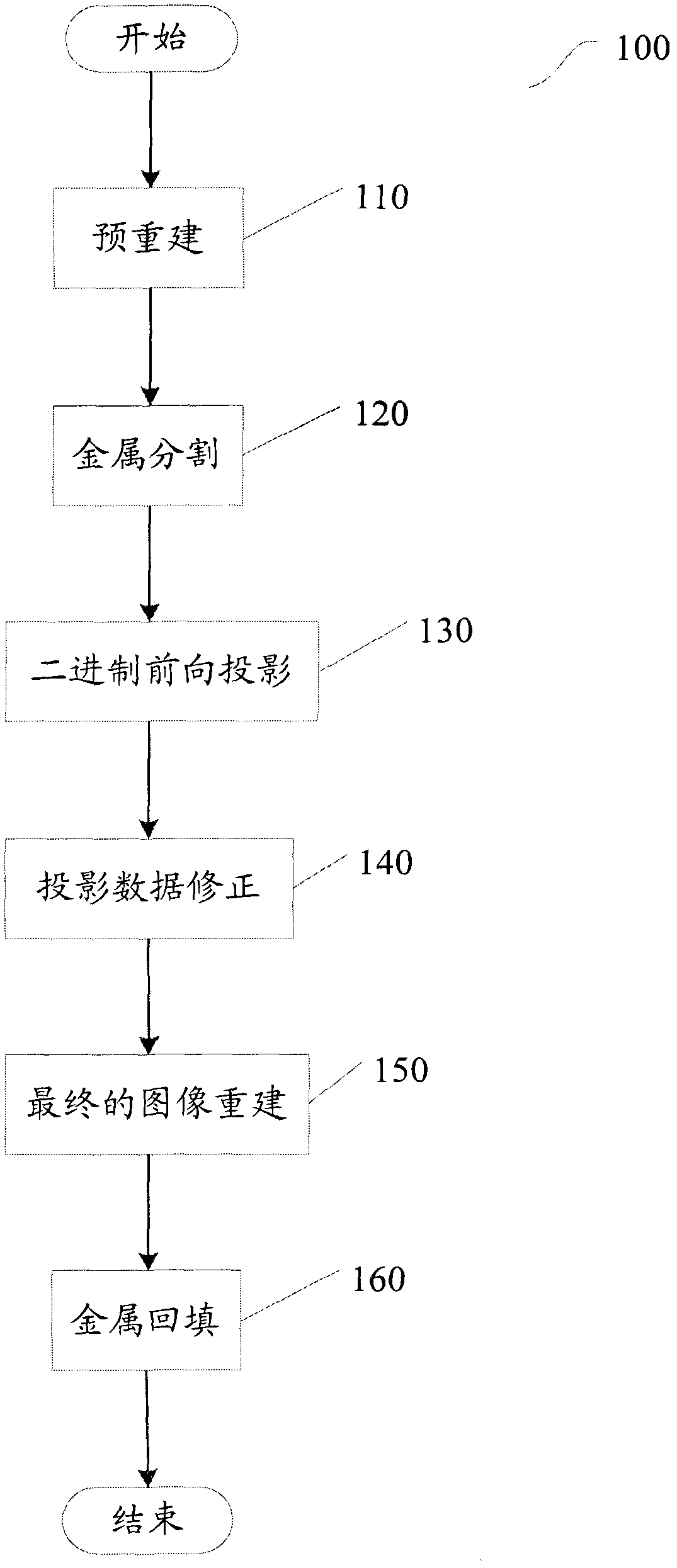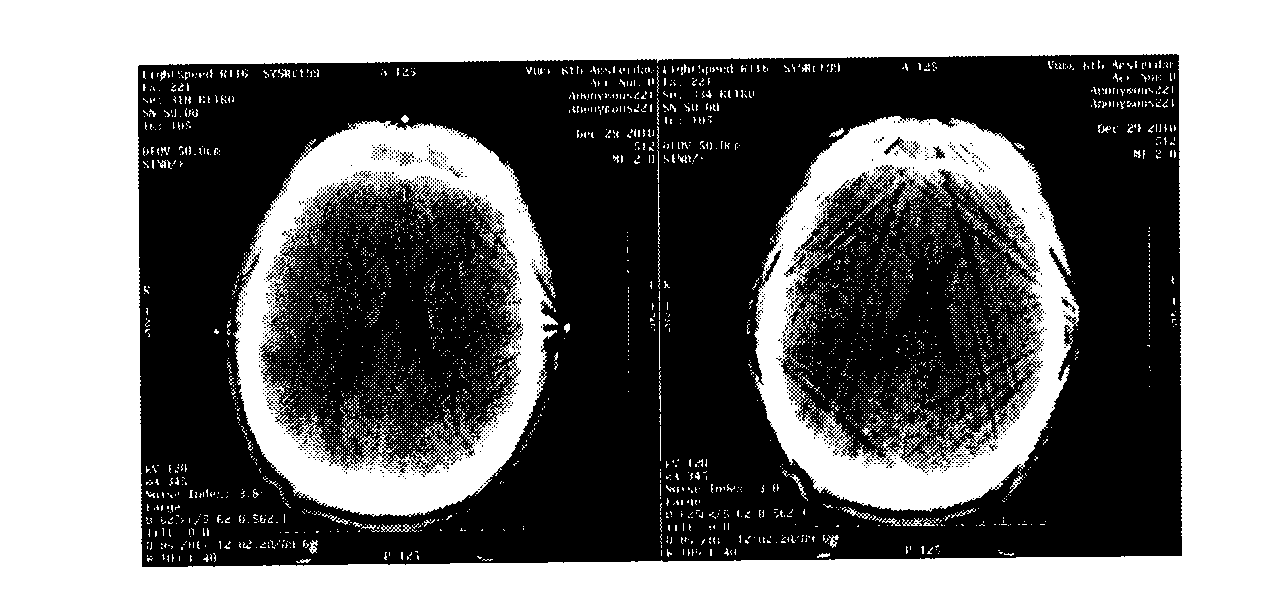Method and device for reducing metal artifacts in medical images
A medical image and metal artifact technology, applied in the field of image processing, can solve the problems of artifacts, inability to cover channels, and inability to ensure that large metals have smooth edges and retain small metals, etc., and achieve the effect of easy realization and good image quality
- Summary
- Abstract
- Description
- Claims
- Application Information
AI Technical Summary
Problems solved by technology
Method used
Image
Examples
Embodiment Construction
[0048] The present invention will be further described below in conjunction with the accompanying drawings and specific embodiments.
[0049] Figure 6 A flowchart of a method 600 according to the present invention is schematically shown. In method 600, artifacts generated by large metal objects and small metal objects in the same tomographic image are processed in different ways, thereby reducing metal artifacts.
[0050] Method 600 begins at step 610, where voxels belonging to small metals in the original mask are removed. This removal can be performed by erosion, or by other methods known to those skilled in the art, such as low-pass filtering. Metallic markers for tumor localization are usually smaller than 2 mm according to clinical requirements in RT. In the reconstructed image achieved with a DFOV of 50 cm, only 1–2 pixels are contained in the original metal mask obtained from threshold-based segmentation. The number of corrosions (N e ) to 1 to completely remove i...
PUM
 Login to View More
Login to View More Abstract
Description
Claims
Application Information
 Login to View More
Login to View More - R&D
- Intellectual Property
- Life Sciences
- Materials
- Tech Scout
- Unparalleled Data Quality
- Higher Quality Content
- 60% Fewer Hallucinations
Browse by: Latest US Patents, China's latest patents, Technical Efficacy Thesaurus, Application Domain, Technology Topic, Popular Technical Reports.
© 2025 PatSnap. All rights reserved.Legal|Privacy policy|Modern Slavery Act Transparency Statement|Sitemap|About US| Contact US: help@patsnap.com



